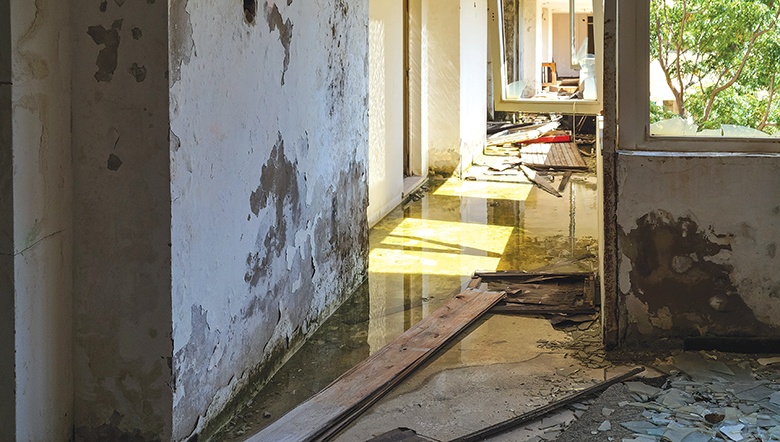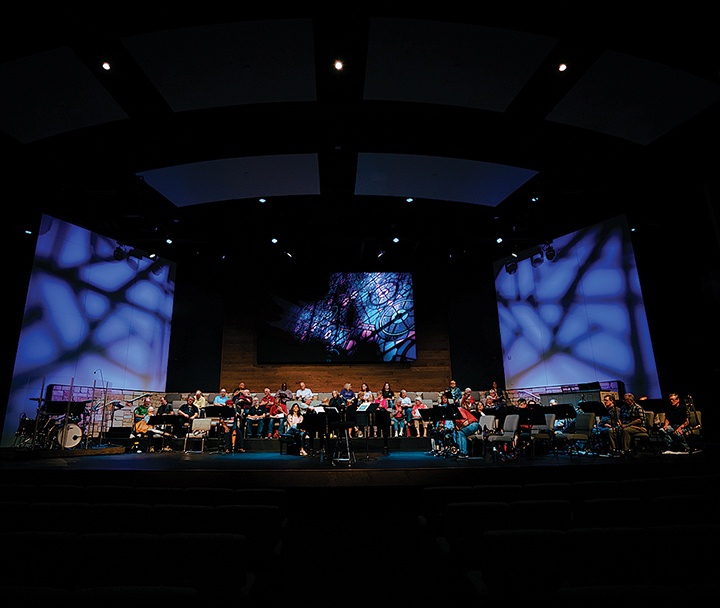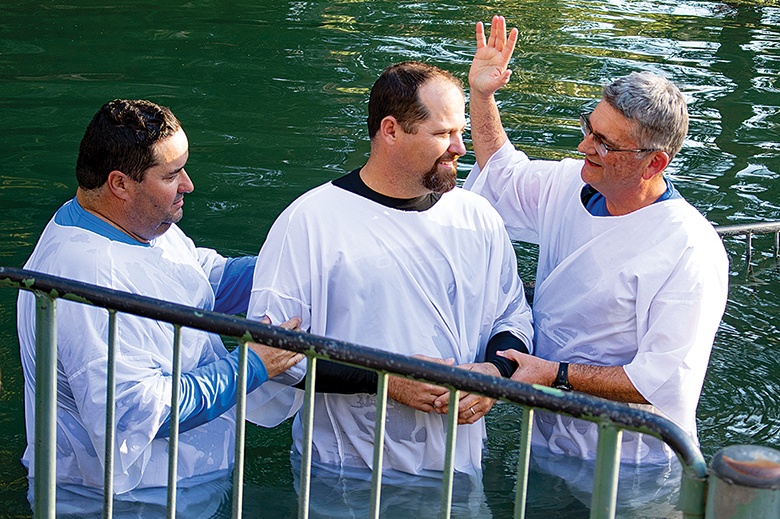Leadership
- Succession planning
By Denise Craig, CAE CCA You won’t be in your role forever. Whether you are serving as the Senior Pastor, the Church Administrator, or as the Facility Manager, one day someone else will be leading at your church. It could be through retirement, moving on to another role, or an emergency no one could have foreseen, things change. Roles change. Leaders change. How can you prepare for what’s ahead? First, you need to ensure you have an emergency succession plan in place. If you were suddenly unable to come to work, who would do your job? That needs to be in writing, clear to the staff team, and clear to the one who would fill the role in an emergency. Next, determine your timeline for a planned succession. Is this five years out? Ten? Once that has been determined, you can back into the schedule for hiring a successor. Finding the right person for the position will take thoughtful prayer and diligent searching. No one is just like you, nor should they be. Times of transition are also times of opportunity for an organization to find a different type of leader, with a different set of gifts. Determining who is making those decisions is also key. Is it a board, a personnel committee, or a team of volunteers gathered with this one purpose in mind? Once a job description and list of desirable qualities have been documented for the successor, then the search begins. Be thorough in vetting candidates. Making a bad hire costs a lot, and not just in dollars. Relationships are at stake, and relational damage can have ripple effects. After a successor has been chosen, the leadership handoff must be carefully planned. Just as with relay runners, there is a passing of the baton. It should be formal and clear. There is no room for error here. A lack of clarity in the hand off will cause confusion among staff and congregants; however, a clear passing of authority to the new leader and the clear release of the former leader will greatly increase the chances of this transition going well. One of the biggest risks in succession is that the former leader won’t let go of the baton. When that happens, it can be devastating not only for the incoming leader, but for the organization as a whole. In their book Next: Pastoral Succession That Works, William Vanderbloemen and Warren Bird describe churches that completely folded because the former leader wouldn’t release the leadership to the new leader. It’s tragic. The future of entire churches and organizations are in the balance. On the other hand, when there is a transparent process, clear communication and a healthy hand-off, succession that goes well can be life-giving to a church and offer new hope for the future mission. In the Bible, we read of Moses and the way he passed the baton to Joshua. Moses certainly wasn’t a perfect leader. He made plenty of mistakes. However, when it came to passing the mantle to Joshua, he made it clear. He installed Joshua as his successor before the entire assembly of Israel. There was no question about when the leadership mantle was transferred. Moses graciously, and with dignity, transferred the leadership to someone else. As you look ahead to your own succession, there are projects you will complete in your season. There also may be things you feel are left undone, like you don’t get to see the promised land. Even so — you can choose to pass the baton well, with grace and support for the new leader. Succession done well requires prayerful planning and preparation. It also requires a heart submitted to what is best for the church in which you serve. Leaving a legacy isn’t just about the way you serve while in the role. It’s also about the way you give it away. Related URLS: Ministry Pay, The TCN Salary Survey: https://www.ministrypay.com TCN Website: https://www.thechurchnetwork.com Denise Craig, CAE CCA is a strategic leader who is passionate about helping others discover their God-given purpose so they can live and lead well. With over twenty years of experience in church leadership, Denise is honored to serve as the Chief Executive Officer of The Church Network. Denise is a Certified Association Executive, a Certified Church Administrator, and a Certified Financial Coach. She serves on the advisory panel for Church Executive Magazine, and is a regular speaker for conferences, Bible studies, and financial seminars. Denise can be reached at denise@thechurchnetwork.com.
Risk Management
- Property protection + peace of mind
PHLYSense can prevent a problem from becoming a catastrophe Church Executive: We’ve talked about PHLYSense in the magazine before. For anyone who might just be hearing the term, what is PHLYSense? Peter Kim: Simply put, PHLYSense is a property protection solution that provides building owners and occupants with monitoring and alerts for adverse conditions. PHLYSense has two main parts. The first involves sensors that monitor ambient temperature and the presence of water. Each sensor is compact and fits into the palm of your hand. Sensors are commonly placed in areas vulnerable to heat, low temperatures, or water — IT server rooms for high-temperature alerts, for example. Or, for water alerts, in vestibules or a under kitchen sink, areas next to hot water heaters or boilers, spaces near sump pumps, or even areas where water leaks or plumbing backups have been a problem before. The second part of the system is the monitoring and the alert infrastructure. This includes an online dashboard (or you can use a phone app) where you can see the status of all the sensors across one location or multiple locations. In the event of an alert — high or low temperature or the presence of water — notifications are pushed out to the organization’s designated individuals via text, email or both. They can also receive phone calls. In this sense, PHLYSense gives churches the opportunity to take action before an issue becomes a catastrophe. PHLYSense is a trade name of Philadelphia Insurance Companies, and the technology is proprietary to Hartford Steam Boiler. They are a top-of-class partner company which provides us with hardware devices and back-end monitoring and support. Partnering in this way allows us to focus on what we do best, which is essentially taking the solution and getting it into our policyholders’ hands. CE: Is there a cost associated with getting PHLYSense? Peter Kim: No; PHLYSense is available to any PHLY policyholder for whom we provide buildings coverage. It doesn’t matter if it’s a little country church or a multisite megachurch: PHLYSense is a value-added service for all our policyholders with building property coverage from PHLY. We’re literally giving these away. CE: Maybe the best way to demonstrate the efficacy of PHLYSense is with real-life examples. I’m told there are a few recent “saves” in which these monitors played a key role. Tell me about those. Peter Kim: The two most recent saves come from nonprofits. The first nonprofit — which experienced a frozen pipe — owns and operates a set of group homes; the other had a leaking-pipe incident in its main office building. In the first incident, the group home was vacant at the time. One of the maintenance employees received a cold-temperature text alert on a Sunday. The area was experiencing a winter storm and the back door had blown open. The pipes froze just before the maintenance worker arrived; water was being released, but it was minimal. The employee was able to turn off the water, do some cleanup, and make a small repair. Interestingly, this same nonprofit signed up for PHLYSense in 2022 but opted to try in just a few of their homes as a trial. Shortly afterward, a similar freeze event occurred in one of their group homes without PHLYSense and caused more than $50,000 in damage. It wasn’t long before the client installed PHLYSense in every group home — more than 20 locations. The executive director wrote us a letter after that Sunday morning event. It reads, in part: Had we not had sensors in this home, I’m certain we would’ve been looking at another $50,000 or more in damage. I have peace of mind that we will be avoiding any further costly repairs due to water damage. In the second example — the non-profit headquarters office — this wasn’t the first time the client experienced water damage due to leaky pipes underneath the kitchen sink. That’s why a PHLYSense sensor was in place under that sink. A month after the first incident, during a recent three-day weekend, the under-the-sink sensor indicated another water release. The client had someone on site within 20 minutes, and the result was minimal water damage. Had they not caught it early, the water could have run for several days and caused a major disruption for the nonprofit. In another event at a church, a pipe leak in the ladies’ restroom occurred, alerting the sensor and resulting in a quick cleanup of the area. At another church, a drain line for the ice machine outside the church gym experienced a leak. The sensor alerted, saving the hardwood floors in the gym from damage — a potentially big expense. The list goes on. In every case, a church/organization avoided or minimized water loss and downtime and the disruption associated with it. PHLY won, too, because those claims were minimized. CE: Conversely, how often do you see claims in which a sensor monitoring system — like PHLYSense — could have averted a disaster? Peter Kim: We see it all the time; water loss events are consistently one of the top drivers for property claims with PHLY. As two general examples, we’ve recently had very large freeze events in the United States. In 2021, polar vortex attacks affected large parts of the country, but we saw an extremely large number of events occur in Texas, primarily due to power and heat outages. Then, in 2022, Winter Storm Elliott happened right around Christmas, again affecting large parts of the country, but especially the Southern states. Those two events showed a marked difference in the outcome between accounts who had PHLYSense and received alerts and were able to take quick action, and those who did not. In a very large sense, this provided definitive proof that PHLYSense works and, again, is to everyone’s benefit. CE: Why are churches such a good fit for the PHLYSense monitoring system? Peter Kim: Many churches have large gaps of time each week when their facilities aren’t in Read More >
Pastor-Friendly A/V
- 4 audio/video/lighting/architecture trends to pay attention to
If the goal is to really reach people (and it is), there’s a shift underway towards things like integrated architecture, spatial audio and more. So, what do I mean by all that? Well, through my work with our firm, I’m finding that some of the newest trends are decidedly old school-meets-new school. #1: Having a “platform look” — one that doesn’t change — as part of your church’s branding. A platform look helps people to connect and builds trust. As an example, think of Joel Osteen’s stage with the ever-present giant, spinning globe. You can picture it, right? That’s the point. This represents what we call “studio church platforms,” something we’re implementing a lot of lately. The idea, here, is to have a flexible space as a part of the platform, but then have it anchored by “sets,” or a look that never changes. This way, when people see the space on video or in person, they can tell exactly where they are. A platform look relies less on the people on stage and more on the statement made by the “look” of the platform. In coming years, this method will change the way we think about church audio/video/lighting and architecture. Think about some of your most trusted shows — Johnny Carson or Jimmy Fallon, for instance. The sets don’t change, yet there’s a space for everything. You see a shot of the set, and you know and trust. We’re observing this in a lot of new churches, and I believe the ones that adopt it first will reap the biggest benefits. #2: LED-wall integration into church architecture. LED walls are a huge trend right now. Gone are the days of a black stage with screens and lights, or just windows; we’re seeing that, with architecture, you can change the dynamics of a worship space while having a set that doesn’t need to change every month. LED walls let you mimic stained glass windows on the walls, or a view of the outdoors. You can use them in backdrop effects and incorporate logos. We’re seeing LED walls act as digital skylights instead of installing real ones. We’re even seeing churches use fully immersive LED wall stages and ceilings that enable a space to serve dual purposes: for worship on the weekends and as a movie / commercial set, which can be rented out, during the week. This configuration has the added benefit of helping pay for the facility and the technology. #3: Cinematic cameras and robotics. Movement and focus — the tools that master filmmakers use to tell stories — are being used more and more to create a way of storytelling in the Church. Movement can be achieved with the focus of lenses, as well as from movement of the camera using jibs (the projecting arms of cranes) and track. Static images in which everything is in focus are boring and won’t keep people’s attention with all the other content floating around. You need your video to look great and have that “focusing” movement to keep viewers locked in. Pushing cameras on tracks involves manpower, whereas using jibs requires the use of robotic cameras on tracks that can move side to side and up and down, creating sweeping moves. Both help capture and keep the audience’s attention. #4: Spatial audio is on the rise! You hear a lot about spatial audio on iTunes, and now you’ll start experiencing it in more and more churches. I’m an early adopter of this 360-degree sound format and have been designing these systems for more than 25 years. I learned most of what I know about it during my time working at Sight & Sound Theaters in Lancaster, Pa., where Bible stories come to life on the stage. It was very effective, as the sides of the stage in this space surround the audience. In using spatial audio at Sight & Sound, we had to think differently about how sound affects people. Through the years, people have started to see the benefit of this type of connection. Effectively, it gives every person a unique experience — one might say that it harkens back to “old school” sound, before big mono audio systems became the norm. With spatial audio, viewers can actually hear where people are on stage. It locates congregants to the reality of what they’re seeing and really starts to make them forget about the sound system, and that they’re not hearing them directly. Very powerful. When a “surround” aspect is incorporated into the space, the room becomes multifunctional: good for speech, but also great for worship and congregational connection. When we think of worship technology, the “flash” of some modern churches might immediately come to mind; but actually, those churches represent a very small subset of the nation. In my experience, a church can benefit much by exploring new (if, in some ways, old-school) ways of thinking and reaching people with its audio, video, lighting and acoustics.
Mission & Travel
- Holy Land journeys: A disciple-making tool or Christian vacation?
Walking in the footsteps of Jesus in the land of the Bible is the ultimate hands-on disciple-making experience for Christians — not just a vacation to a destination related to church. Educational Opportunities Tours (EO) President/CEO James Ridgway recently interviewed Rev. Tom Smith about how Holy Land journeys have changed lives and inspired the faith of people who traveled with him in the Holy Land. James Ridgway: How did your first Holy Land journey influence your life and ministry? Rev. Tom Smith: It’s safe to say that it began to affect me even before I returned home. But the immediately noticeable influence was the way that it affected my preaching and teaching. I found myself painting word pictures of a passage of Scripture as I would preach or teach. I would give little tidbits of what it means to go ‘up’ from Jericho or the winds affecting the Sea of Galilee as they funneled into that area. It was like I had an entirely new resource to add to my library as I prepared for a sermon or class. Ridgway: When did you decide to start taking groups to the Holy Land? How did the people respond? Smith: I went the first time without a group. But after returning, my excitement was obvious. I talked about it constantly. As soon as I was introduced to Educational Opportunities and learned of how I could ‘earn’ a trip, I decided to go back and take as many people as possible. As soon as I mentioned that I was putting a group together, people started signing up. A journey to the Holy Land is in the hearts of a lot of people — not as a vacation but as part of their faith development — so there was natural interest in participating. Folks were excited that they could travel with me because they trusted me as their pastor. Ridgway: Afterwards, what did you see in the lives of those who experienced the Holy Land? Smith: They were changed. They engaged with Scripture differently. They talked about the way they heard the sermons differently. They began to participate more readily in Sunday School, study groups or accountability groups. Many of them became more open and expressive of being leaders in the congregation. They have a renewed/revitalized faith, it seems. Ridgway: What other benefits come from the Holy Land journeys? Smith: One of the things was how close the group became. They bonded with each other as they shared the experience. They also bonded with me, as their pastor, differently. Instead of hearing me teach or preach a couple of hours per month, they spent 12 to 14 hours a day talking and experiencing this profoundly moving journey. We formed some truly lasting bonds. They also came back with a deeper understanding of the current issues facing people in the region. They experienced not just what the news media shared, but what they themselves saw. They could ‘put a face’ to it, and it opened doors/eyes in a way that nothing else could do. Ridgway: How does a pastor plan a journey to the Holy Land? Smith: There are two ways a pastor could begin this journey. First, they could participate in an EO Familiarization tour. After experiencing the Holy Land personally, they could start planning a group journey. Personal experience helps while recruiting a group. The second way is to jump right in and organize an EO Holy Land journey for their group by going to www.eo.travelwithus.com and reviewing the different itineraries offered and finding one that best suits what they and their folks would love to see. Then, they can reach out to the EO team to partner and build the journey that will help make disciples for Jesus Christ. The EO staff will provide all the tools necessary — including ongoing support — to build a life-changing tour for the congregation.











